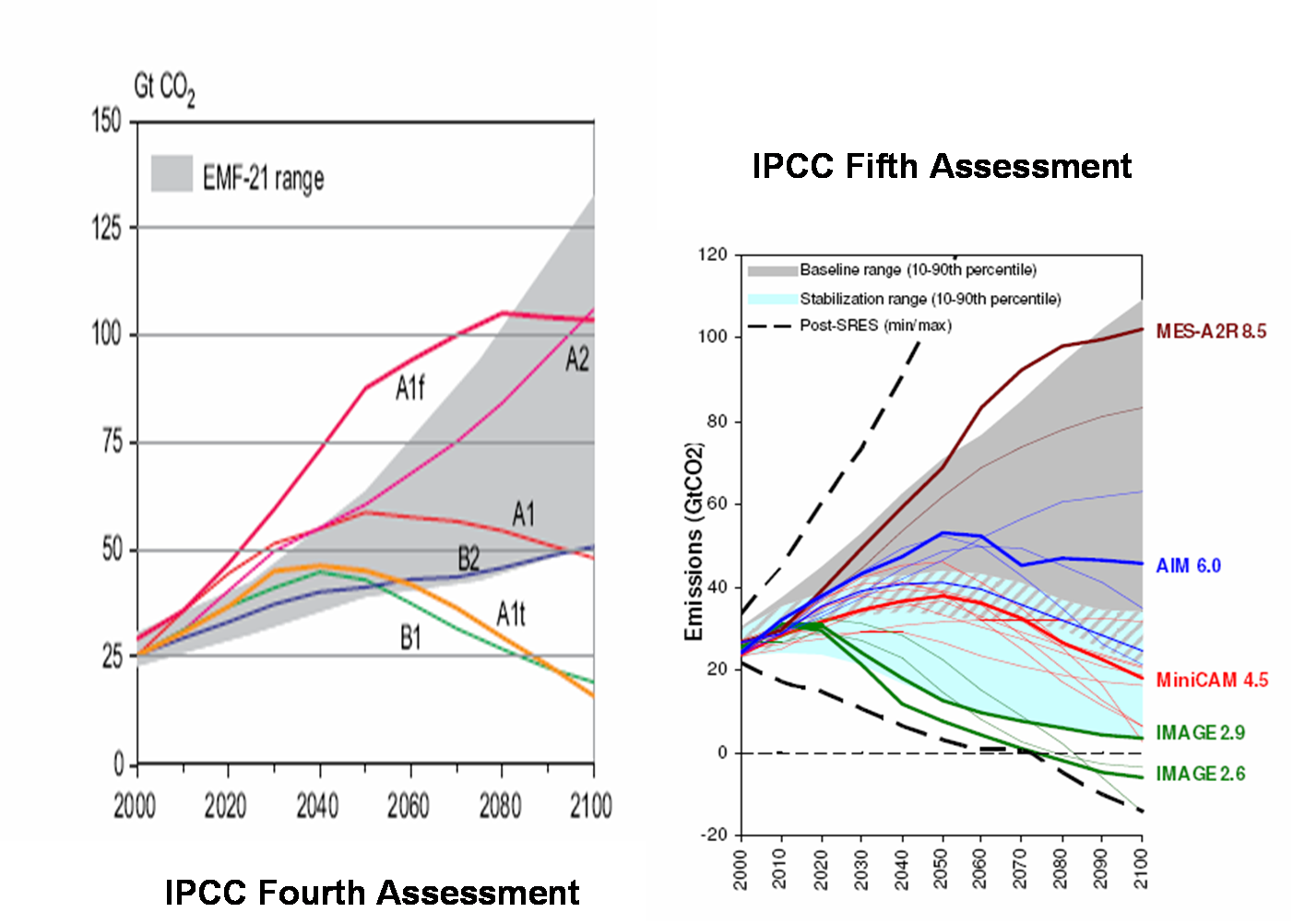IEA on Reducing The Trajectory of Global Emissions
June 6th, 2008Posted by: Roger Pielke, Jr.
The International Energy Administration released its Energy Technology Perspectives report today, with a view on the prospects of returning global emissions to present values by 2050 and also more aggressively cutting them by half in 2050.
The report has several interesting conclusions:
1. Its cost estimates for stabilizing emissions at current amounts have doubled over the past 2 years to $50 per ton of carbon dioxide.
2. Its estimates for halving emissions from today’s levels are $200 to $500 per ton of carbon dioxide.
By contrast, the Stern Review’s 2006 estimate of the average cost of a similar reduction in emissions to 2050 was $25 per ton of carbon dioxide (see Figure 9.5 here in PDF), with an uncertainty range that topped out at about $100 per ton. The IPCC AR4 scenarios led to costs ranging up to $200 per ton of carbon dioxide (consistent with a 550 ppm stabilization trajectory by 2050, as seen in figure TS.9 in this PDF). (Note: I am unclear as to how the report handles the baseline issue that we raised in our recent Nature paper, but if they handled it properly, the differences in cost estimates from Stern/IPCC may simply reflect a more transparent accounting.)
What to take from this? Estimates of the economic costs of mitigation are highly unstable and speculative. Consider that the Stern Review considered no costs of oil above $80/barrel. However, the trend in cost estimates is up, due to the higher costs of energy and infrastructure. Efforts to map out the costs of mitigation to 2050 (or 2030 for that matter) are little more than guesses, leaving plenty of room to find a pleasing result.
3. The IEA report sees no path to stabilizing or halving emissions without a massive investment in both nuclear power and carbon capture and storage (for coal and gas). These are both politically controversial and will generate resistance among some groups, perhaps limiting their future prospects. To the extent that this happens other avenues for emissions reductions will need to be found to meet these ambitious goals.
4. Here is what the IEA sees as necessary each year:
The average year-by-year investments between 2010 and 2050 needed to achieve a virtual decarbonisation of the power sector include, amongst others, 55 fossil-fuelled power plants with CCS, 32 nuclear plants, 17,500 large wind turbines, and 215 million square metres of solar panels. [Reducing 2050 emissions to half of today's] also requires widespread adoption of near-zero emission buildings and, on one set of assumptions, [by 2050] deployment of nearly a billion electric or hydrogen fuel cell vehicles.
5. Finally, while the report says that the technologies to stabilize emissions at current values by 2050 are, in principle, available, it observes that they are not for reductions below this level, and thus calls for:
A massive increase of energy technology Research, Development and Demonstration (RD&D) is needed in the coming 15 years, in the order of USD 10-100 billion per year.
In short, the IEA report should serve as a reminder that the challenge of mitigation is significant and costly. Consequently,the politics of adopting mitigation policies will continue to be difficult (to put it mildly). Efforts to couch mitigation policies as low cost (in the short term) or of immediate benefit will likely fail, because presently this simply is not true. Strategies that will have greater prospects for success will those that align the short term costs with short term benefits, by broadening the focus of mitigation policies beyond a narrow focus on long-term climate change, or, by capitalizing on technological advances that do in fact lead to demonstrable short-term benefits by reducing the costs experienced by consumers and voters.
Until this lesson is learned, climate policy will continue in its current form.
